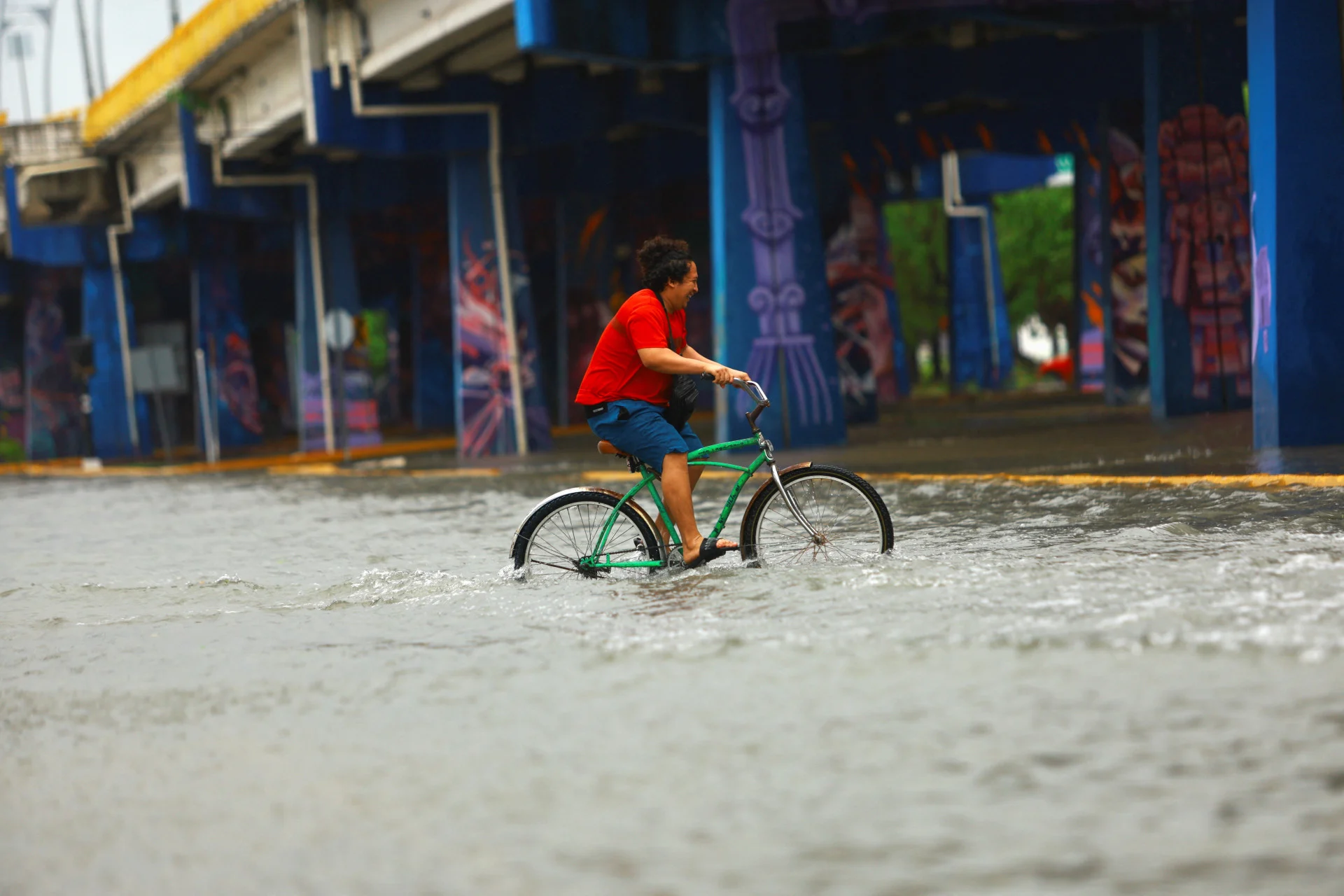
Tropical Storm Beryl lashes Mexican coast after Caribbean destruction

By Paola Chiomante and Jose de Jesus Cortes
CANCUN/TULUM, Mexico (Reuters) - Tropical Storm Beryl smashed into the Mexican coast near top beach destinations on Friday, whipping palm trees with strong winds and bringing heavy rain, after forging a deadly trail of destruction across the Caribbean.
The core of the storm, downgraded from a hurricane, shifted over the Yucatan Peninsula, with maximum sustained winds dipping to 70 mph (113 kph) after it passed over the coastal resort town of Tulum.
While Beryl's passage over Mexico's Quintana Roo and Yucatan states resulted in slower winds, the U.S. National Hurricane Center forecast dangerous storm surges and destructive waves in the surrounding area.
"We're asking everyone to stay in your homes, in your shelters, do not leave," said Quintana Roo Governor Mara Lezama in a video message on social media platform X.
Among Mexico's top tourist destinations, the Yucatan Peninsula is known for its white-sand beaches, lush landscapes and Mayan ruins.
While "rapid weakening" is expected as it moves further inland and crosses the peninsula on Friday, according to the NHC, Beryl is expected to pick up intensity once the sprawling system enters the Gulf of Mexico.
Beryl was the first hurricane of the 2024 Atlantic season. It became this week the earliest Category 5 hurricane on record, with scientists pointing to its rapid strengthening as almost certainly fueled by human-caused climate change.
Beryl is about 65 miles (105 km) east-south-east of the port of Progreso and a short distance inland from Merida, the colonial-era capital of Yucatan state.

A person rides a bike in a flooded road as Hurricane Beryl strikes, in Playa del Carmen, Mexico, July 5, 2024. (REUTERS/Jose Luis Gonzalez)
Check out The Weather Network’s hurricane hub for all the latest on the active hurricane season ahead
The slow-moving storm churned northwest at just 15 mph (24 kph) by Friday midmorning.
Along the empty streets of Cancun's main hotel district, normally full of international tourists, heavy rain pounded the pavement.
Mexico's national water commission, CONAGUA, flagged a risk of flooding around the tourist hubs, as well as in neighboring Campeche state.
Quintana Roo schools were closed, as were local beaches. Mexico's defense ministry had opened around 120 storm shelters ahead of Beryl's arrival.
Before reaching Mexico, Beryl wreaked havoc across several Caribbean islands. It swept through Jamaica, Grenada, St. Vincent and the Grenadines, in addition to unleashing heavy rainfall on northern Venezuela. It has claimed at least 11 lives, tearing apart buildings while felling power lines and trees.

People stand on the coast in the Caribbean Terrace neighborhood as Hurricane Beryl approaches, in Kingston, Jamaica, July 3, 2024. REUTERS/Marco Bello
The death toll may rise as more information becomes available.
The NHC predicts that Beryl will move toward northeastern Mexico and south Texas later in the weekend.
The storm forced the evacuation of around 3,000 tourists from Isla Mujeres, a popular tourist island near Mexico's top beach resort of Cancun, according to the island's tourism director Jose Magana. Many residents had sought refuge in shelters in anticipation of the storm's arrival.
WATCH: Beryl may strengthen in the Gulf of Mexico by next week
RELATED: Beryl's 'alarming' characteristics: Dissecting its rapid intensification
About 100 flights were canceled at Cancun's main airport by Thursday, causing tourists to rush to catch the last outgoing flights.
Mexico's major oil platforms, primarily located in the southern rim of the Gulf of Mexico, are not expected to be affected or shut down, but some oil projects in U.S. waters to the north had been temporarily paused due to Beryl's expected path.
Research by the ClimaMeter consortium determined that climate change significantly intensified Beryl. According to the study, the storm's severity, along with its associated rainfall and wind speed, saw an increase of 10-30% as a direct result of climate change.
(Reporting by Jose de Jesus Cortes in Tulum, and Paola Chiomante in Cancun; Additional reporting by Raquel Cunha in Tulum, Raul Cortes Fernandez in Mexico City, Natalia Siniawski in Gdansk; Editing by Barbara Lewis, Tomasz Janowski and Rod Nickel)









